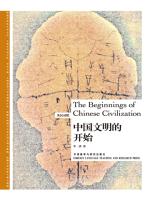The Preview
Compared to the Mongols, Chinese people are more like southerners and may have migrated from the south, characterized by multi-ethnic integration and becoming more integrated in continuous migration
1. The Chinese and Japanese are closer to the southern Orientals including Malay, Tagalog people, Daya, Java, Burmese and Shan. Even the skull structure of each group of Indians is closer to that of Chinese and Japanese than that of northern Mongoloid.
2. The recent discovery of human fossils in the south of the Yangtze River is also conducive to explaining that the South played a more important role than any other place in the composition of China's early population; In addition, the Beijingers themselves, as many famous anthropologists have suggested more than once, may have originated from the south.
3. China's historical civilization was not entirely a gift from the West, nor did it suddenly develop from an unknown source. Just like other Old World cultures, it gradually evolved from a prehistoric period that lasted for hundreds of thousands of years. If there is anything unusual about the cultural phenomena in this region, it is its continuity, although there have been some disconnected phenomena at certain stages of its evolution; With the progress of scientific archaeology, those obvious gaps have gradually closed one after another. For example, not long ago, all prehistors had the impression that apart from the Beijingers and their related cultures, there were no early Paleolithic remains in this region to speak of; However, at present, some new discoveries in the upper reaches of the Yellow River Basin have uncovered many ruins of this period. Furthermore, less than a decade ago, another impression among prehistoric archaeologists was that the Javanese Homo erectus did not leave any trace on its way from Java to near Beijing; However, in recent years, fossil discoveries south of the Yangtze River have conclusively proven the opposite.
4. At present, we only need to note that in the late second millennium BC (the Shang Dynasty), North China was a gathering place of Eskimo, Mongoloid, Australian aborigines, Negros, Caucasians and other ethnic groups. Eskimo and Mongoloid have Absolute advantage in number; Secondly, various types of Melanesians; The type of skull with a smaller head shape cannot be confirmed. These identification works indicate that the Chinese people during this period were already in a "melting pot".
5. The culture of business is a multifaceted synthesis that represents the integration of multiple cultural origins. The foundation of Yin culture is deeply rooted in prehistoric times; The development of rice culture and the cultural complex attached to it demonstrate that the economic foundation of the Yin Shang Empire was a typical East Asian type and developed in situ.
The founders of the Shang Dynasty may have been the earliest Chinese to convert their kneeling position to a sitting position, which the Japanese later referred to as' sitting upright '. Whether this is from Egyptology or invented by ourselves remains to be investigated. However, it can be confirmed that the ancestors of the Shang Dynasty first conquered the Dongyi, absorbed some of their artistic traditions, and taught them some new war techniques, provided that they fought under the leadership of merchants. The merchants took advantage of this newly trained army, referring to Kexia in the west, and absorbed some of the Xia culture that they believed was worth learning. So the brilliant civilization of the Shang Dynasty was a synthesis of three different cultural traditions: Dongyi, Xixia, and Yuanshang.
7. The migration of Chinese people in mainland China and border areas; Most migrations occur mainly driven by uninterrupted ethnic invasions, especially in the north. Each migration has led to an intensification of the hybridization process between different clans, tribes, and ethnic groups. There have been at least four major population migrations in history. The first significant population migration occurred during the Shang and Zhou dynasties, in the 12th century BC, when the Zhou dynasty seized the power of the Shang dynasty. The subsequent second migration took place in the Warring States period in the 5th century BC BC, and this migration lasted until the late third century BC. The two most complete documented population migrations were the later two. More than forty years ago, I drafted a summary on this issue, and recently there have been many historical documents that have elaborated on it in detail. They are the Yongjia migration in the 4th century AD and the Jingkang migration in the 12th century AD. The cause of these two migrations was the invasion of northern ethnic groups, which forced residents to migrate southward on a large scale. As a result, the locals who stayed in North China absorbed invaders from the Siberian grasslands; And the immigrants who crossed the Yangtze River and settled in the Yellow River basin, which was more southerly, to some extent integrated with the indigenous residents of the southern region.




 京公网安备 11010802032529号
京公网安备 11010802032529号